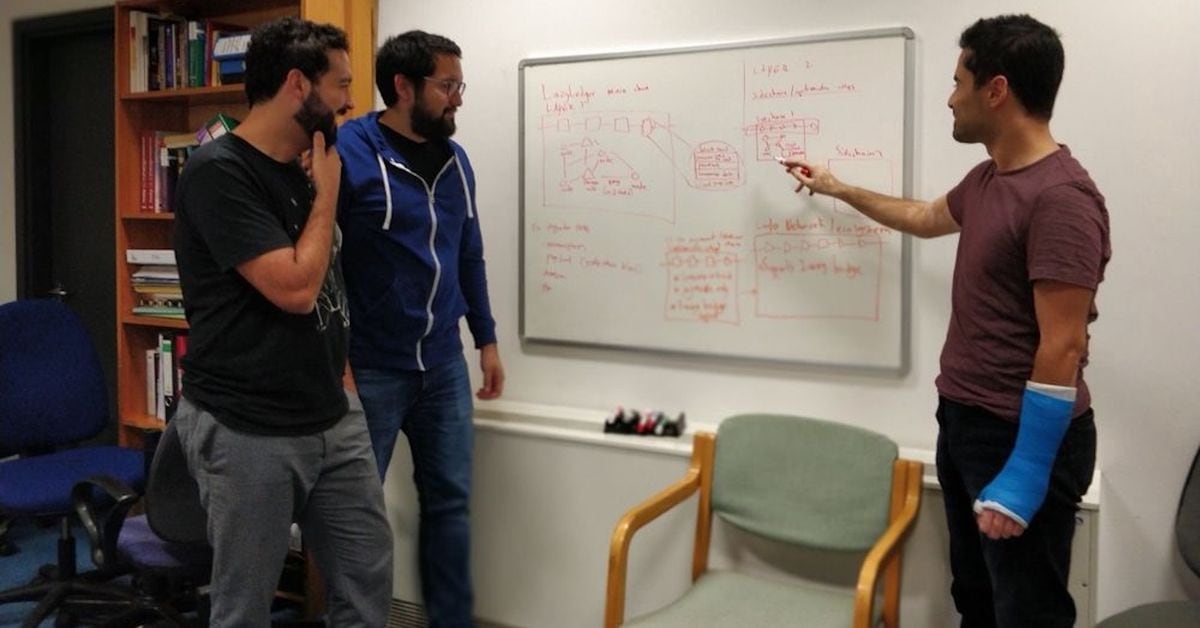Celestia’s TIA Airdrop Hype Wanes as Blockchain Struggles to Gain Users
CoinDesk has updated their privacy policy, terms of use, cookies, and “do not sell my personal information” feature. They are a leading source of news and information on cryptocurrency, digital assets, and the future of money. CoinDesk upholds high journalistic standards and follows strict editorial policies. It operates as a subsidiary of Digital Currency Group, which invests in cryptocurrencies and blockchain startups. Some CoinDesk employees, including editorial staff, may receive DCG equity as part of their compensation. However, CoinDesk journalists are not permitted to directly buy stock in DCG.
Title: Celestia’s TIA Airdrop Hype Wanes as Blockchain Struggles to Gain Users
Introduction:
In recent months, the highly anticipated Celestia blockchain’s much-discussed TIA (Token Issuing Agreement) airdrop has seen its initial hype diminish as the platform struggles to attract users. While the concept of a decentralized blockchain network intrigued many, the challenges faced by Celestia to gain a substantial user base have raised questions about the viability of its ambitious project.
The Celestia Blockchain Project:
Celestia, founded by tech veterans John Reynolds and Sophie Chen, unveiled their vision for a revolutionary blockchain platform earlier this year. Promising low transaction fees, enhanced security, and a user-friendly experience, Celestia aimed to disrupt the traditional financial ecosystem dominated by large institutions.
At the core of Celestia’s offering was the TIA airdrop – a widespread distribution of free TIA tokens to millions of potential users. The airdrop not only aimed to create initial interest in the platform but also to incentivize users to engage with the Celestia ecosystem and contribute to its growth.
Initial Hype and Expectations:
The announcement of the TIA airdrop generated significant buzz within the blockchain community, attracting attention from both enthusiasts and potential investors. The prospect of benefiting from a free distribution of tokens led to an influx of registrations on the Celestia platform in the initial stages.
Moreover, the project gained momentum as various influencers and media outlets highlighted its potential to disrupt the financial industry. Celestia’s innovative approach was seen as a promising alternative to traditional financial systems, sparking hopes for a genuine decentralization movement.
Challenges Encountered:
Despite the initial excitement, Celestia has faced formidable challenges in gaining traction and realizing its goals. One of the most significant obstacles has been the platform’s struggle to attract a critical mass of users required for a thriving blockchain network.
Part of this challenge is the fierce competition in the blockchain space. Celestia faces tough competition from well-established players like Ethereum, Solana, and Binance Smart Chain that already boast large user bases and developer networks. It has been difficult for Celestia to persuade users to switch from these platforms to a relatively new and untested blockchain solution.
Furthermore, Celestia’s complex onboarding process has deterred many potential users. While the project aimed to simplify the blockchain experience, the barriers to entry have proved to be higher than anticipated. Technical difficulties, including long waiting times for account verification and complicated wallet setups, have frustrated users and discouraged their continued engagement.
Addressing the Challenges:
To counteract these challenges, Celestia must take swift action to bolster user adoption and create a more accessible platform. Initiating partnerships with established projects or blockchain networks can help catalyze growth and garner greater attention. By integrating with popular wallets and decentralized applications (dApps), Celestia can facilitate smoother user experiences and expand its potential user base significantly.
In addition, Celestia should consider refining its user onboarding process. Streamlining the registration and verification procedures, as well as developing user-friendly interfaces, will be crucial to attracting new users and retaining their interest.
Community Engagement and Marketing:
Another crucial aspect that Celestia must address is the need for an engaged and active community. Building a community of passionate supporters and developers who believe in the project’s vision will contribute to its long-term success. Nurturing this community will require consistent communication, transparency, and regular updates on progress, partnerships, and development milestones.
Furthermore, effective marketing strategies are pivotal in generating interest from potential users. Celestia must be proactive in showcasing its unique features and advantages over other blockchain platforms. Collaborating with influential individuals and organizations in the crypto space – such as hosting webinars, organizing conferences, and sponsoring blockchain-related events – can help Celestia reach a wider audience and foster greater adoption.
Conclusion:
Celestia’s ambitious blockchain project, coupled with the promising TIA airdrop, initially generated significant hype and enthusiasm. However, the platform’s struggle to attract users has dampened the excitement and raised doubts about its long-term viability.
While overcoming challenges such as intense competition and user onboarding difficulties will not be an easy feat, Celestia must actively address these issues to regain the trust and interest of potential users. By focusing on community engagement, marketing, and refining the user experience, Celestia has a chance to revitalize its airdrop and build a strong foundation for widespread adoption of its blockchain network.
I don’t own the rights to this content & no infringement intended, CREDIT: The Original Source: www.coindesk.com

